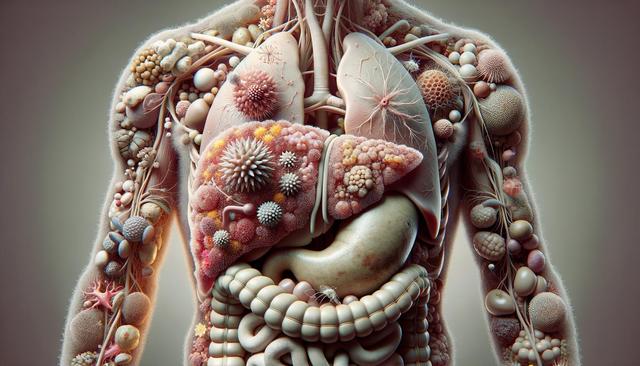What Is Fatty Liver Disease?
Fatty liver disease, also known as hepatic steatosis, occurs when excess fat accumulates in the liver cells. This condition can be classified into two main types: alcoholic fatty liver disease (AFLD) and non-alcoholic fatty liver disease (NAFLD). While many people with fatty liver may not experience noticeable symptoms at first, the condition can progress and cause inflammation or liver damage over time. One of the lesser-known symptoms that some individuals experience is persistent itching, also known as pruritus. Itching related to fatty liver disease can be uncomfortable and significantly affect quality of life, often signaling that liver function is being compromised.
Why Does Fatty Liver Disease Cause Itching?
Itching in fatty liver disease is thought to be associated with bile flow disruption. The liver plays a critical role in producing and regulating bile, which helps digest fats and remove toxins from the body. When liver function is impaired, as can happen with fatty liver disease, bile may accumulate in the bloodstream. This condition, known as cholestasis, can irritate nerve endings in the skin and lead to itching. Common areas affected include:
- Hands and feet
- Arms and legs
- Back and shoulders
Itching may be more pronounced at night and can vary in intensity. Not everyone with fatty liver disease will experience this symptom, but when it does occur, it can be a sign of more advanced liver involvement. Understanding the underlying mechanisms can help in addressing the discomfort and seeking appropriate treatment.
Recognizing Related Symptoms
While itching can be an isolated symptom, it often accompanies other signs that suggest liver dysfunction. These may include:
- Yellowing of the skin or eyes (jaundice)
- Dark urine or pale stools
- Fatigue and weakness
- Abdominal discomfort or bloating
Together, these symptoms may indicate that the liver is under stress or that fatty liver disease is progressing to a more severe state, such as non-alcoholic steatohepatitis (NASH) or cirrhosis. In such cases, it is important to consult a healthcare professional for a thorough evaluation. Blood tests, imaging, or a liver biopsy might be recommended to assess liver health and determine the appropriate course of action.
Managing Itching Caused by Fatty Liver
Managing itching related to fatty liver often involves addressing the root cause—improving liver health. Lifestyle changes can have a significant impact. These may include:
- Adopting a balanced diet low in saturated fats and sugars
- Engaging in regular physical activity
- Limiting alcohol consumption
- Maintaining a healthy weight
In addition to lifestyle changes, specific treatments may be recommended to relieve itching. These can include medications that help improve bile flow, antihistamines for symptom relief, or topical creams to soothe the skin. In some cases, phototherapy or bile acid sequestrants might be used to manage severe itching. It’s important to follow a healthcare provider’s guidance and to track symptoms over time.
When to Seek Medical Help
If itching is persistent, worsening, or accompanied by other signs of liver dysfunction, it’s essential to seek medical attention. Fatty liver disease is often manageable when detected early, but delaying care can lead to complications. A medical evaluation can help determine whether itching is due to fatty liver or another condition. Common diagnostic steps include:
- Liver function tests
- Ultrasound or MRI of the liver
- Assessment of bile duct health
Early intervention not only helps manage symptoms like itching but also reduces the risk of progression to more serious liver conditions. Open communication with your healthcare provider ensures that appropriate steps are taken to support liver function and improve overall well-being.
Conclusion
Fatty liver disease is a growing health concern that can lead to unexpected symptoms, including persistent itching. While this symptom can be distressing, understanding its connection to liver function allows for better management and care. By adopting healthy lifestyle habits and seeking timely medical advice, individuals can take proactive steps toward improving liver health and reducing discomfort. If you or someone you know is experiencing unexplained itching along with other signs of liver issues, consulting a healthcare professional is a crucial first step toward effective treatment and improved quality of life.




Leave a Reply